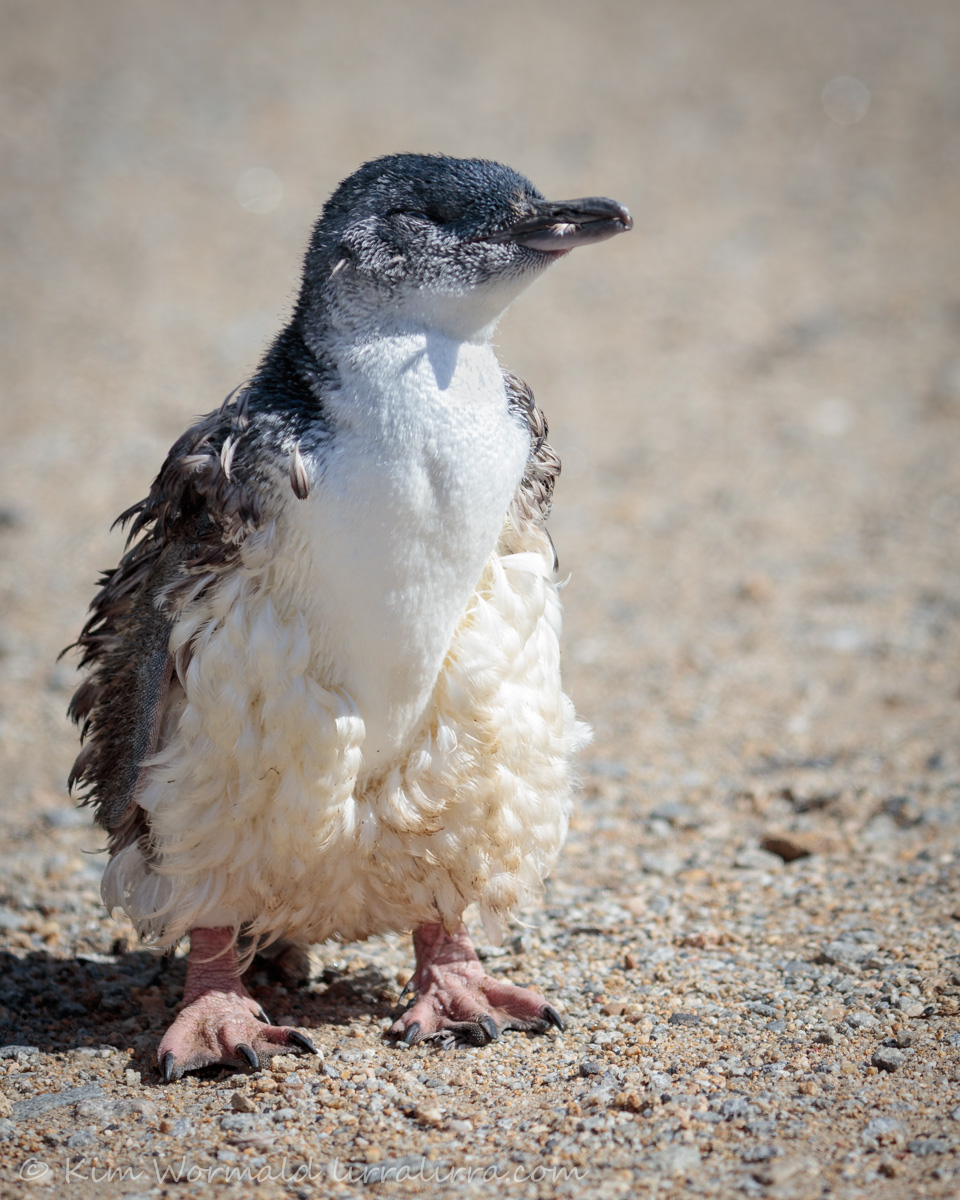In a country that is better known for its kangaroos and koalas, its sharks and crocodiles, its spiders and snakes, it’s neat to know that it is also home to the world’s smallest penguin species.
I was invited to host a Bird Photography presentation and workshop at Phillip Island Camera Club – and what a beaut day it was. Not only are the club members a fantastically friendly group of excellent photographers but the birds, eventually, were fantastic too.
We started off at The Nobbies which is often seething with Silver Gulls, there was a chance we’d see a Peregrine Falcon or a Nankeen Kestrel and I hoped for a glimpse of a Little Penguin peeking out from one of the nesting boxes. Instead there wasn’t a Silver Gull in sight and it was slim pickings until a Nankeen Kestrel turned up. The midday light was horribly contrasty but it was great to see the kestrel hovering, plummeting and eating its captures on the wing.
Then, just as we were heading back to our vehicles, we saw an exceedingly cute, and exceedingly bedraggled Little Penguin in mid moult.
Little Penguin (Eudyptula minor) – in moult
1/500, f/6.3, ISO 200
If you look closely you’ll see that this Little Penguin has its eye partly open and is looking at the camera; you might also notice the tiny feather in its bill. It’s fascinating to see the difference between the feathers being shed and the sleek appearance of the new feathers emerging. Penguins only sleep for a few minutes at a time; perhaps we should rename ‘cat naps’ as ‘penguin naps’.
Little Penguins have an incredible number of downy feathers, about 10,000, which is up to four times the number typical of birds of flight. The extra density provides insulation as they swim through cold waters to feed on fish and squid. They have spines in their mouths which help them grip and swallow their prey, I posted an image a while back that shows the peculiar structures inside the mouth of a Little Penguin.
Little Penguins have dark upper-parts and white underparts which effectively camouflage them from above and below when they are in the ocean. Their dark feathers are blue-black, as can be seen on its head and flipper (modified wing). They are the only penguin species with blue feathers. They have pink legs and feet, and sturdy little nails which the males use for excavating burrows where they breed and rest when not at sea. Little Penguins are about 30cm high and weigh about 1kg; they live along the southern coast of mainland Australia, Tasmania, New Zealand and the Chatham Islands.
All birds moult to replace feathers that have become worn due to abrasion and every day exposure to sun, wind and water. Moulting takes a lot of energy and during this time Little Penguins lose about half their body weight as they are unable to go to sea to forage. They usually begin moulting in April, once they have finished raising their chicks. They fatten themselves up prior to moulting as they’ll be stuck on land for about 17 days. Usually they stay in their burrows while moulting, I’m not sure why this little guy wandered onto the pathway. One of the group alerted a ranger and the penguin was soon scooped up, popped into a vet box and taken to safer area.
Happy birding, Kim
Update on the Victorian duck shooting season
Incidents of significant concern occurred at a Victorian lake last weekend which have left me worried that the dwindling number of duck shooters are feeling a bit bolshie following the $5m allocated to their ‘sport’. I can’t speak in detail about the incidents as statements have been made to police and we are hoping that charges will be laid. I’m particularly concerned as such brashness doesn’t mix well with alcohol and guns.
There was fresh evidence of illegal shooting at the Western Treatment Plant at Werribee where rescuers discovered cartridges and duck wings.
On a brighter note, the work that is being done by Animals Australia, Lyn White and the rest of the AA team is phenomenal and it’s awesome that so many people are speaking about the need to permanently ban the duck shooting season, including Federal Labor MPs Melissa Parke and Kelvin Thomson – thank you all!
I was speaking with Laurie Levy (if waterbirds built statues they’d build one of Laurie) who established the Coalition Against Duck Shooting in 1986, and he stressed several positives including that, “there have been very few shooters on Victorian wetlands all season; duck shooting is very much a dying activity”.
Please keep up the pressure on the politicians with a quick email or phone call – every voice counts.
~ Thank you for visiting and commenting
~ If you would like a weekly email letting you know that lirralirra has been updated please use the ‘subscribe’ box above right


Gorgeous pic Kim and again insightful information about this species. Thanks again Kim for enlightening our understanding and appreciation of this wonderful avian world.
I often wondered why penguins waddled! I received the following information from the Phillip island people. Imagine you are sitting on a chair, then try and walk forward. That is the structure of penguins. So when they lie on their bellies they can propel themselves.
Love the pic of the moulting chick.
How adorable, it looks like it is wearing a wooly shawl.
It is heartening to see how many people care about native birds and are willing to stick up for them
Laurie is the Thomas Clarkson for ducks.
Interesting about the penguin naps!